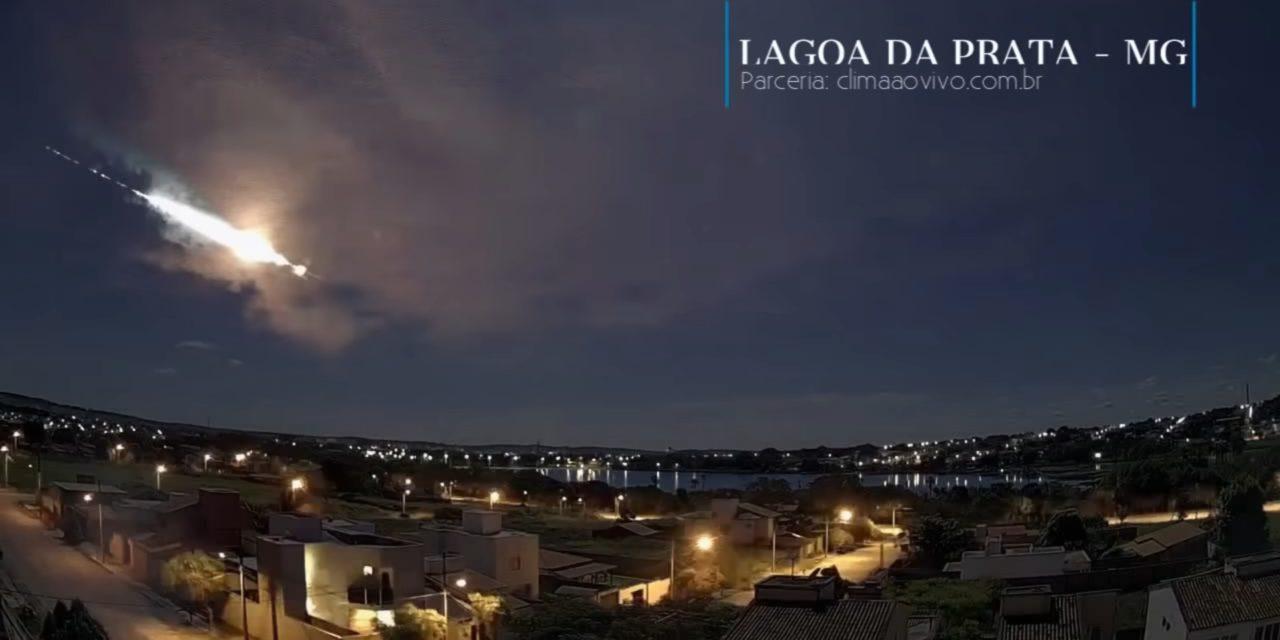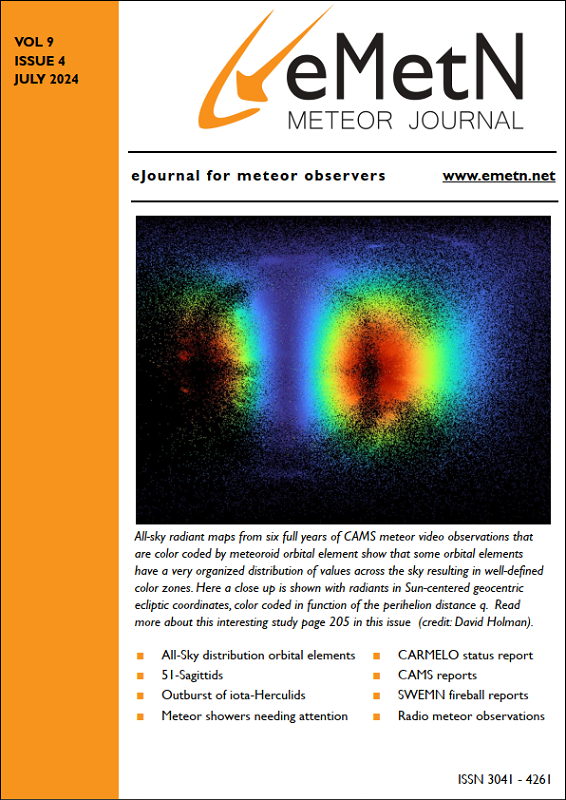8th May 06:25 UT ( 03:25 BRT) prograde SW to NE bolide over Brazil
Update Eucrite recovered
A great flash followed by a strong explosive sound.
Videos registered in 8 cameras in 7 cities in Minas Gerais, São Paulo and Paraná.
According to preliminary analysis, the object followed a prograde trajectory from southwest to northeast, starting its luminous phase at about 64 km height, between Araxá and Uberaba. It shone bright headed towards the northeast at a speed of 15.36 km/s until it exploded at a height of 30 Km, close to the Municipality of Tiros, in Minas Gerais.
Analysis is under revision by Bramon and efforts are on to determine the object’s initial mass.The current data suggests that some fragments of this meteoroid possibly survived the atmospheric passage and reached the ground.
Good write up by Marcelo Zurita with a trajectory solution

Preliminary trajectory – Credits: BRAMON

End of bolide trajectory recorded by NTV

Despite the heavy clouds, the bolide was also recorded by SONEAR’s allsky camera:

Update 4th November 2020
Rocha encontrada em Tiros é um meteorito vindo de Vesta que teve sua queda filmada em Maio

Meteorito Tiros – Credits: Tirense Notícias




